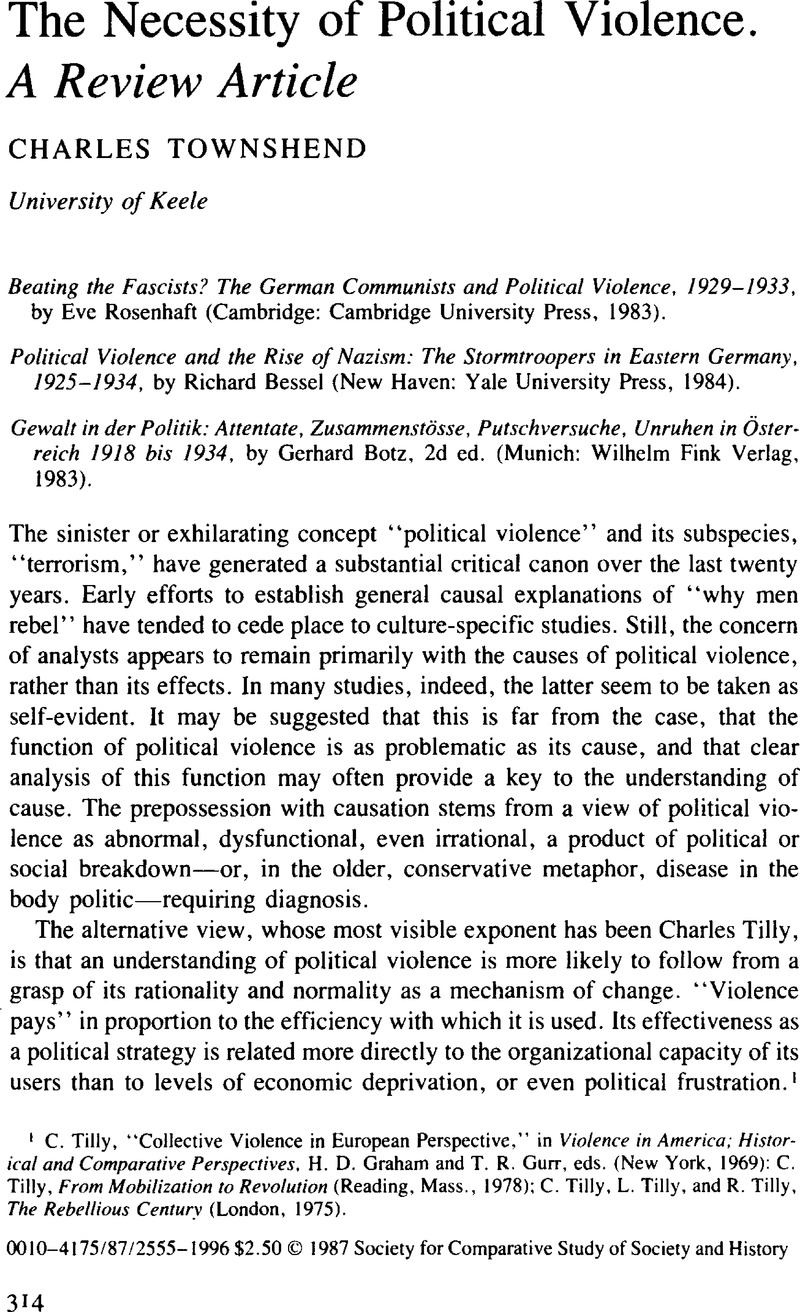Article contents
The Necessity of Political Violence: A Review Article
Published online by Cambridge University Press: 03 June 2009
Abstract

- Type
- Comparative Politics
- Information
- Copyright
- Copyright © Society for the Comparative Study of Society and History 1987
References
1 Tilly, C., “Collective Violence in European Perspective,” in Violence in America; Historical and Comparative Perspectives, Graham, H. D. and Gurr, T. R., eds. (New York, 1969)Google Scholar: Tilly, C., From Mobilization to Revolution (Reading, Mass., 1978)Google Scholar; Tilly, C., Tilly, L., and Tilly, R., The Rebellious Century (London, 1975)CrossRefGoogle Scholar.
2 E.g., Macfarlane, L. J., Violence and the State (London, 1974), 41–54Google Scholar.
3 Bessel, R.. “The Potempa Murder,” Central European History, 10 (1977), 241–54CrossRefGoogle Scholar.
4 Thornton, T. P., “Terror as a Weapon of Political Agitation,” in Internal War, Eckstein, H., ed. (Glencoe, III, 1964)Google Scholar.
5 Sauer, W., “National Socialism: Totalitarianism or Fascism?” American Historical Review, 73:2 (1967), 411CrossRefGoogle Scholar. On the “Freikorps/Wehrverband/Parteimiliz complex,” see Rosenhaft, E., “Gewalt in der Politik: Zum Problem des ‘Sozialen Militarismus,’” in Militar und Militarismus in der Weimarer Republik, Muller, K.-J. and Opitz, E., eds. (Dusseldorf, 1978)Google Scholar. Use of the term paramilitary remains unsatisfactorily imprecise, however, as in the definition offered by Diehl, J. M. in Paramilitary Politics in Weimar Germany (London, 1977), 110Google Scholar.
6 Fischer, C.'s work on the SA, incorporated in Stormtroopers. A Social, Economic, and Ideological Analysis, 1929–35 (London, 1983)Google Scholar, although disputed in point of its arguments on working-class recruitment into the SA, seems confirmed in respect of turnover by both Bessel and Rosenhaft. On activism, cf.Merkl, P. H., Political Violence under the Swastika (Princeton, 1975), 313–43, 581–99Google Scholar.
- 3
- Cited by


